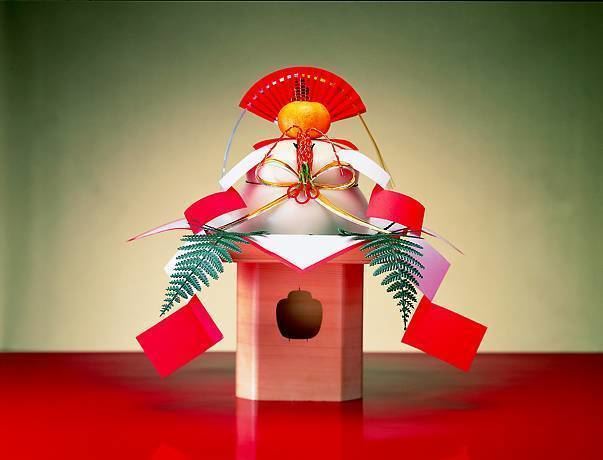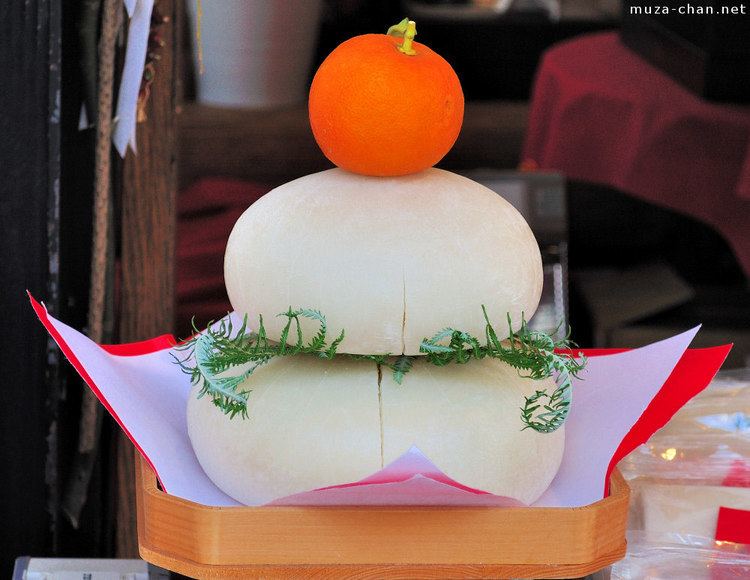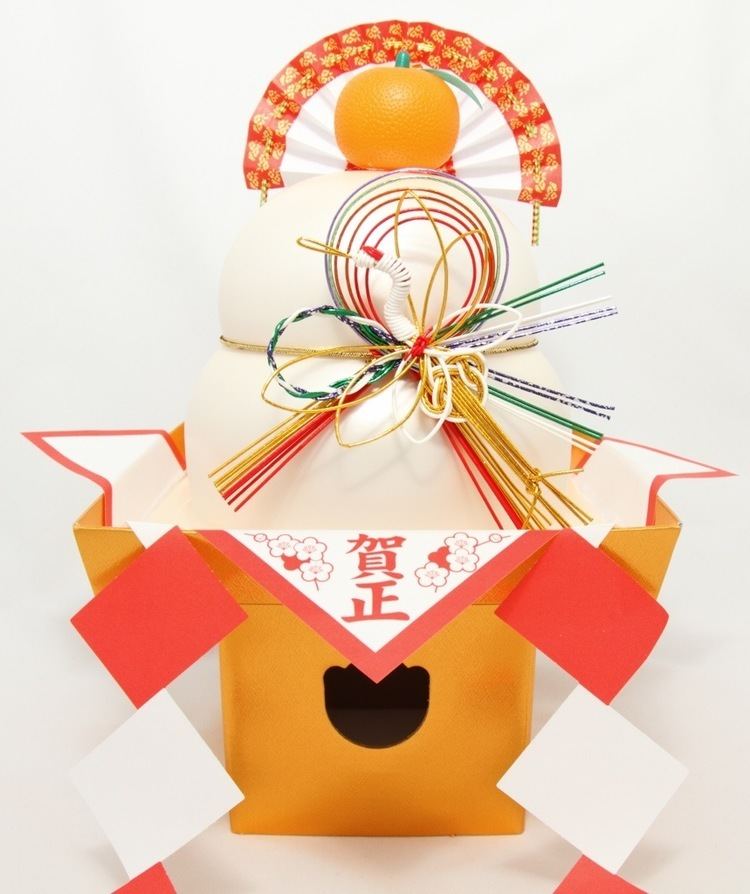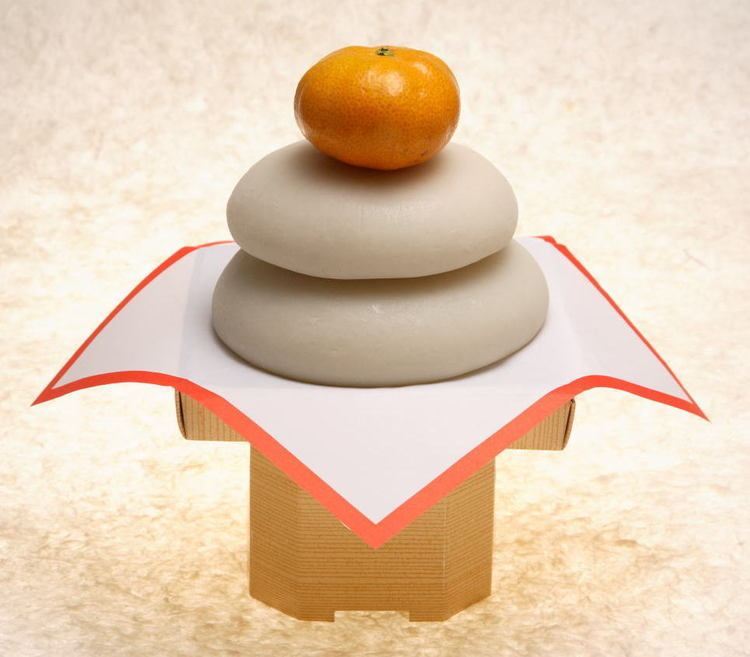 | ||
Similar Mochi, Zōni, Osechi, Satsuma Mandarin, Bitter orange | ||
Japanese new year decoration kagami mochi
Kagami mochi (鏡餅, "mirror rice cake"), is a traditional Japanese New Year decoration. It usually consists of two round mochi (rice cakes), the smaller placed atop the larger, and a daidai (a Japanese bitter orange) with an attached leaf on top. In addition, it may have a sheet of konbu and a skewer of dried persimmons under the mochi. It sits on a stand called a sanpō (三宝) over a sheet called a shihōbeni (四方紅), which is supposed to ward off fires from the house for the following years. Sheets of paper called gohei (御幣) folded into lightning shapes similar to those seen on sumo wrestler's belts are also attached.
Contents

The kagami mochi first appeared in the Muromachi period (14th–16th century). The name kagami ("mirror") is said to have originated from its resemblance to an old-fashioned kind of round copper mirror, which also had a religious significance. The reason for it is not clear. Explanations include mochi being a food for sunny days, the spirit of the rice plant being found in the mochi, and the mochi being a food which gives strength.

The two mochi discs are variously said to symbolize the going and coming years, the human heart, "yin" and "yang", or the moon and the sun. The "daidai", whose name means "generations", is said to symbolize the continuation of a family from generation to generation.

Traditionally the kagami mochi was placed in various locations throughout the house. Nowadays it is usually placed in a household Shinto altar, or kamidana. It has also been placed in the tokonoma, a small decorated alcove in the main room of the home.

Contemporary kagami mochi are often pre-moulded into the shape of stacked discs and sold in plastic packages in the supermarket. A mikan or a plastic imitation daidai is often substituted for the original daidai.

Variations in the shape of kagami mochi are also seen. In some regions, three layered kagami mochi are also used. The three layered kagami mochi are placed on the butsudan or on the kamidana. There is also a variant decoration called an okudokazari placed in the centre of the kitchen or by the window which has three layers of mochi.

It is traditionally broken and eaten in a Shinto ritual called kagami biraki (mirror opening) on the second Saturday or Sunday of January. This is an important ritual in Japanese martial arts dojos. It was first adopted into Japanese martial arts when Kanō Jigorō, the founder of judo, adopted it in 1884, and since then the practice has spread to aikido, karate and jujutsu studios.
